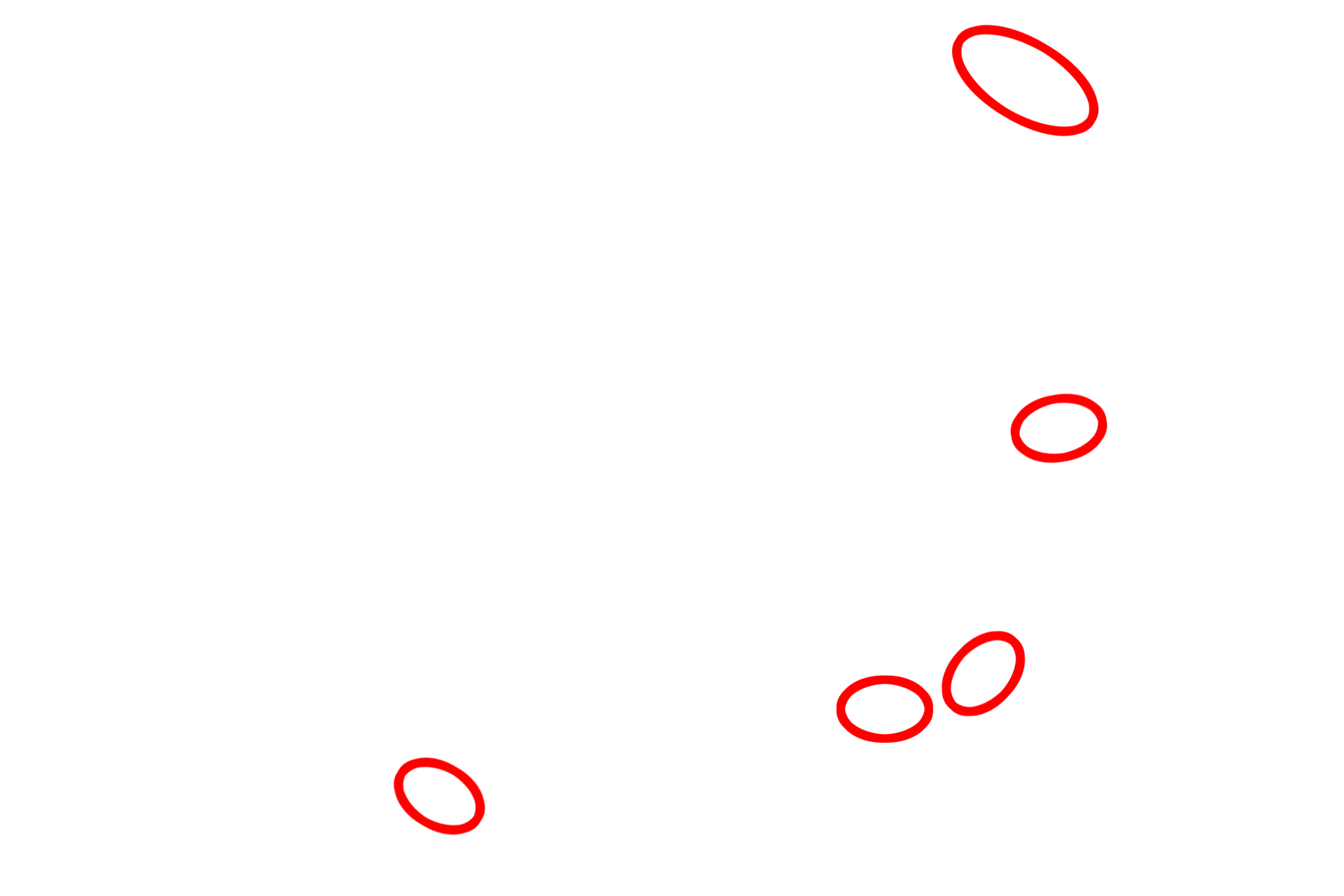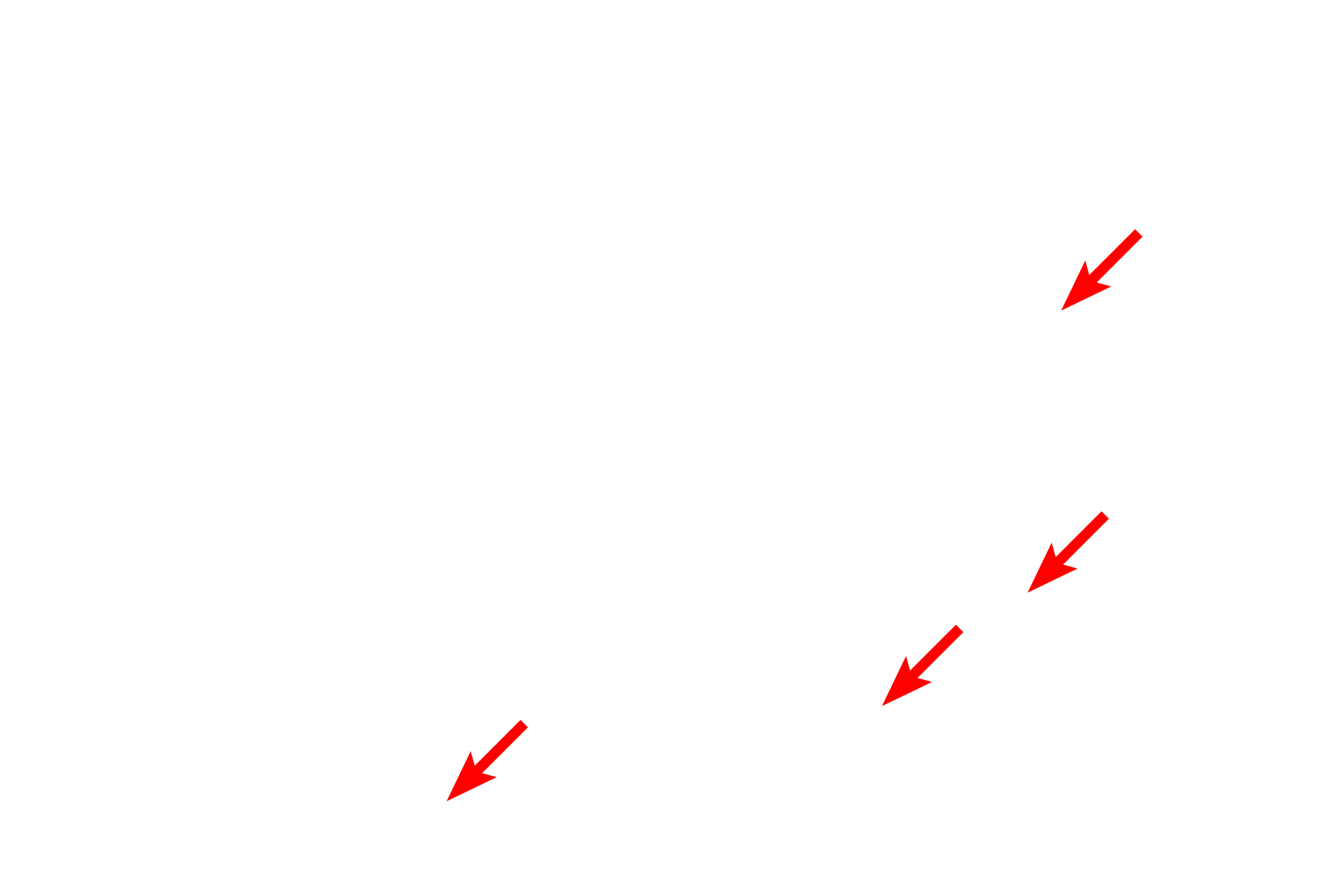
Hemidesmosomes
Hemidesmosomes are prominent in the basal layer of the epidermis. Structurally, they consist of one-half of a desmosome and serve to anchor an epithelium to its underlying basal lamina. The associated keratin intermediate filaments insert into the attachment plaques. Transmembrane proteins extend from the plaque into the basal lamina to provide attachment. 30,000x

Epidermal cell
Hemidesmosomes are prominent in the basal layer of the epidermis. Structurally, they consist of one-half of a desmosome and serve to anchor an epithelium to its underlying basal lamina. The associated keratin intermediate filaments insert into the attachment plaques. Transmembrane proteins extend from the plaque into the basal lamina to provide attachment. 30,000x

Connective tissue
Hemidesmosomes are prominent in the basal layer of the epidermis. Structurally, they consist of one-half of a desmosome and serve to anchor an epithelium to its underlying basal lamina. The associated keratin intermediate filaments insert into the attachment plaques. Transmembrane proteins extend from the plaque into the basal lamina to provide attachment. 30,000x

Hemidesmosomes
Hemidesmosomes are prominent in the basal layer of the epidermis. Structurally, they consist of one-half of a desmosome and serve to anchor an epithelium to its underlying basal lamina. The associated keratin intermediate filaments insert into the attachment plaques. Transmembrane proteins extend from the plaque into the basal lamina to provide attachment. 30,000x

- Attachment plaques
Hemidesmosomes are prominent in the basal layer of the epidermis. Structurally, they consist of one-half of a desmosome and serve to anchor an epithelium to its underlying basal lamina. The associated keratin intermediate filaments insert into the attachment plaques. Transmembrane proteins extend from the plaque into the basal lamina to provide attachment. 30,000x

- Keratin filaments
Hemidesmosomes are prominent in the basal layer of the epidermis. Structurally, they consist of one-half of a desmosome and serve to anchor an epithelium to its underlying basal lamina. The associated keratin intermediate filaments insert into the attachment plaques. Transmembrane proteins extend from the plaque into the basal lamina to provide attachment. 30,000x

Plasma membrane
Hemidesmosomes are prominent in the basal layer of the epidermis. Structurally, they consist of one-half of a desmosome and serve to anchor an epithelium to its underlying basal lamina. The associated keratin intermediate filaments insert into the attachment plaques. Transmembrane proteins extend from the plaque into the basal lamina to provide attachment. 30,000x

Lamina densa of basal lamina
Hemidesmosomes are prominent in the basal layer of the epidermis. Structurally, they consist of one-half of a desmosome and serve to anchor an epithelium to its underlying basal lamina. The associated keratin intermediate filaments insert into the attachment plaques. Transmembrane proteins extend from the plaque into the basal lamina to provide attachment. 30,000x